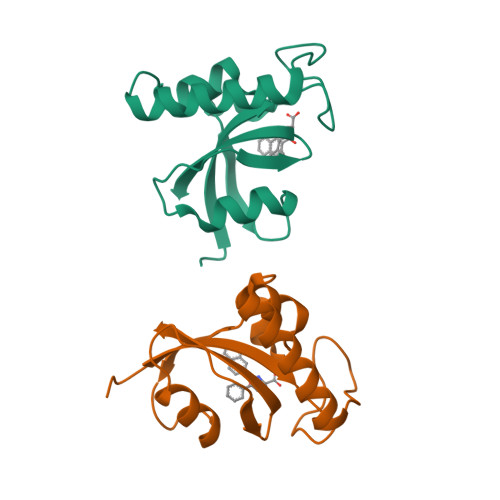Structure-based design of novel human Pin1 inhibitors (II).
Dong, L., Marakovits, J., Hou, X., Guo, C., Greasley, S., Dagostino, E., Ferre, R., Johnson, M.C., Kraynov, E., Thomson, J., Pathak, V., Murray, B.W.(2010) Bioorg Med Chem Lett 20: 2210-2214
- PubMed: 20207139
- DOI: https://doi.org/10.1016/j.bmcl.2010.02.033
- Primary Citation of Related Structures:
3I6C, 3JYJ - PubMed Abstract:
Following the discovery of a novel series of phosphate-containing small molecular Pin1 inhibitors, the drug design strategy shifted to replacement of the phosphate group with an isostere with potential better pharmaceutical properties. The initial loss in potency of carboxylate analogs was likely due to weaker charge-charge interactions in the putative phosphate binding pocket and was subsequently recovered by structure-based optimization of ligand-protein interactions in the proline binding site, leading to the discovery of a sub-micromolar non-phosphate small molecular Pin1 inhibitor.
Organizational Affiliation:
Pfizer Global Research and Development, 10770 Science Center Drive, San Diego, CA 92121, United States.


















